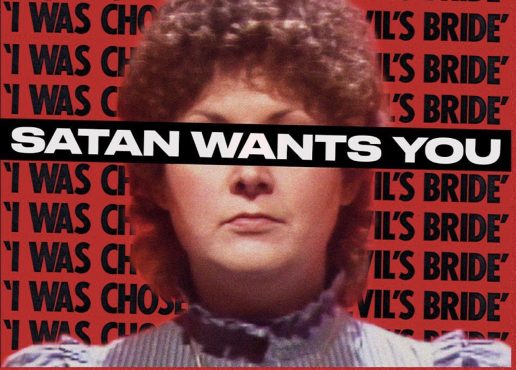Co-director Sean Horlor talks Victoria during the satanic panic and his time at UVic
In an age of misinformation and rampant media sensationalism, the real-life story depicted in Satan Wants You, while shocking, fits right into today’s landscape.
The Canadian documentary film covers the lead-up to and eventual global chaos that ensued with the publication of Michelle Smith’s 1980 memoir Michelle Remembers, which documents recovered-memory therapy sessions between Smith and psychiatrist Lawrence Pazder.
After seeing the documentary, I had the pleasure of interviewing co-director, Sean Horlor, over a video call to learn how his time in Victoria and at UVic influenced the film.
This interview has been edited for clarity and brevity.
Congrats on the film and your premiere at South by Southwest. The film is quite a ride. For those who don’t know what the film is about, how would you describe Satan Wants You?
When we set out to make the film, we were hoping to tell the origin story of the global satanic panic in the 1980s and ’90s. When you set out to do a film like this, you have all these ideas of what it’s gonna be, [but] now that we’re five years since we’ve started, I see the film now as this story about two lives colliding in the most unexpected and horrible way that changed the world in ways that we’re still dealing with 40 years later after Michelle Remembers was published.
Did your personal perspective affect any part of the making of the film?
From a personal standpoint, this story has been with me almost my entire life. I grew up in Victoria in the 1980s right after Michelle Remembers was published. When I was a kid, there were stores downtown in Victoria that you weren’t supposed to go to because they had altars in the back and killed babies and drank blood. I know it’s stupid now, but Ross Bay Cemetery was a scary place. Now, it’s this big historic cemetery that has Emily Carr buried in it, but when I was a kid, it was where all the “satanists” were.
Do you have some things that you took from your time at UVic that helped your career come to fruition?
I have a bachelor of fine arts. I focussed in creative writing, so I studied poetry and fiction writing, and I had a lot of really great professors like Lorna Crozier, Patrick Lane, Bill Gaston, and Aislinn Hunter. I remember Patrick Lane saying that this is a degree about critical thinking and creative thinking; less so about the writing part, but how do you actually tell a story? When you look at a fine arts degree that way, you can take those skills and apply it to a lot of different artistic mediums.
I took classes while doing my creative writing degree with Brian Hendricks, who was the film studies guy — flaming-red hair, huge personality. He gave me a passion for film that I didn’t have before attending UVic, and between that and publishing a book of poetry after graduating, I just really wanted to be in TV and film.
Lastly, do you have any technical advice for people wanting to get into filmmaking, particularly Canadian filmmakers? I noticed a few Canadian broadcast logos at the beginning of the film.
Yeah, the Canadian financing system is interesting. I would say to anybody who is in the creative writing department or in film studies who are wanting to actually get into the industry or they want to be an independent filmmaker and make their own films, Canada is a pretty special place. With this film, we’ve gone out into the international marketplace and I hear all these stories at festivals about how difficult it is, especially for documentary filmmakers, to get their work funded. Between the Canada Media Fund, Telefilm, Rogers, plus all of our public broadcasters, if you are a Canadian filmmaker wanting to make a film, you have a leg-up on a lot of other people around the world because of how the government and industry works in Canada.
Thank you so much for your time, Sean. Will the film be coming to streaming or digital?
It’s coming to the CBC Documentary channel Oct. 1 and CBC Gem later in the Fall. And also Tubi in the U.S., if anyone’s in the U.S.!








